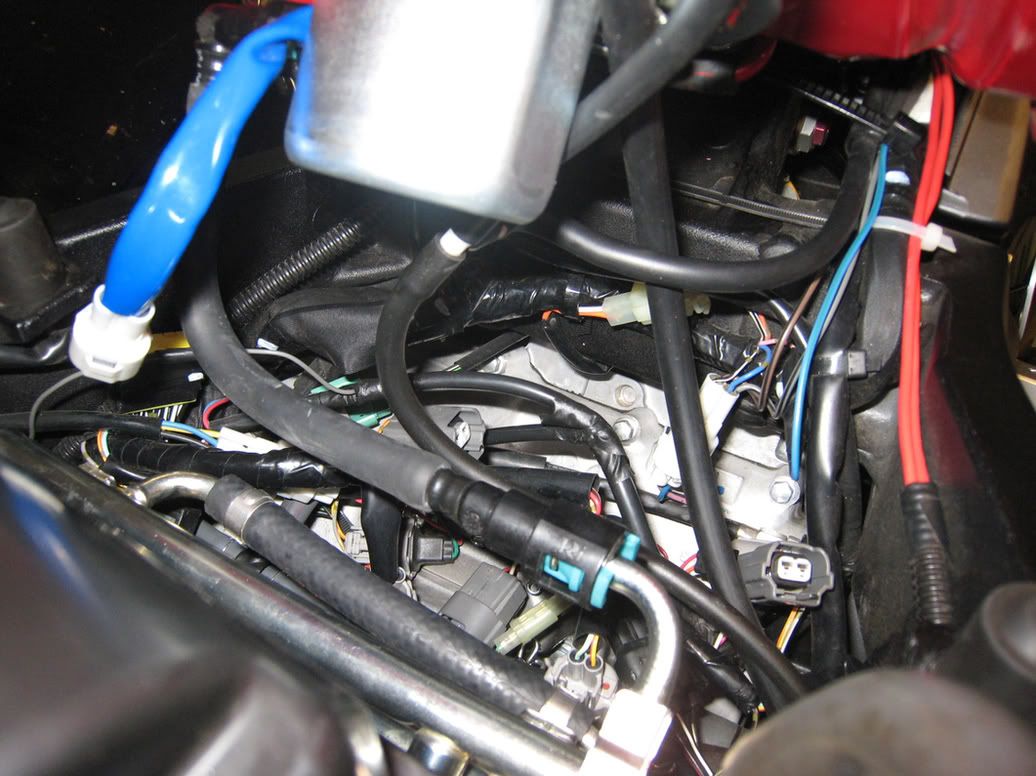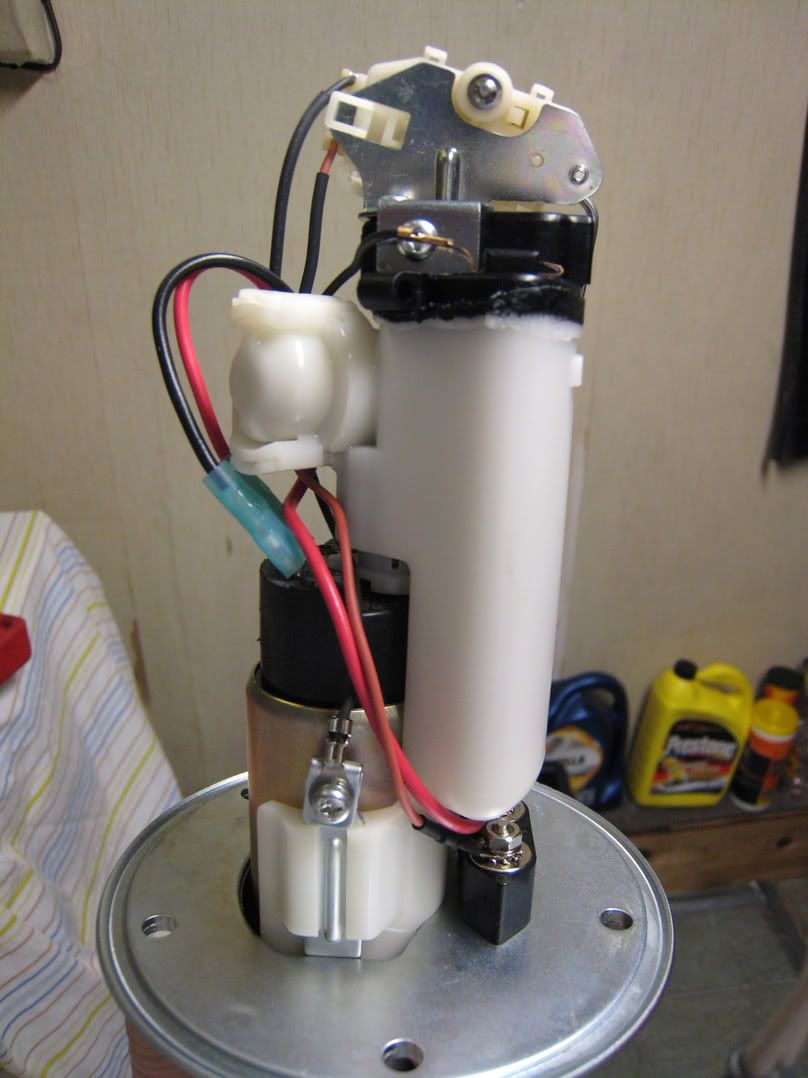Suzuki doesn't sell a replacement fuel pump without the whole regulator fuel pump unit at the cost of 500 dollars. That is quite steep in price. I figured out that our fuel pump can be replace by fuel pumps found in 92-00 honda civics or 94-01 acura integras. These pumps cost 100 bucks vs 500 which is a great deal. They are intank pumps just like our bikes pumps.
I upgrade the fuel pump and made how-to guide in the process. Note there is no reason to upgrade the pump unless you are going to turbo/supercharge/n2o or run e85. I upgraded to a walbro 255lph pump for e85.
I am not held liable for injures that might occur, burning your house down or other acts of nature. Use this guide at your own risk and using common sense when handling flammable liquids like gasoline.
Step 1: Remove both retaining bolts to the seat and both tank trims.
Step 2: Remove the front tank hold down bolt and prop the tank.
![Image]()
Step 3: Disconnect the fuel line from the fuel rail by pressing in both green tabs and sliding the line off. Next disconnect the fuel pump harness by pressing in the release tab and pull the two connectors apart.
![Image]()
Step 4: Remove the rear fuel tank retaining bolt
![Image]()
Step 5: Set the tank on level ground with something soft protecting the paint.
![Image]()
Step 6: Remove the fuel pump assembly by removing the 5 bolts. Remove the bolts in a crisscross pattern. Even though the bolts are only torque down to 7lbs, because locktie was apply from the factory. They will require a little force to break lose.
![Image]()
Step 7: Slowly lift up the assembly and rotate slowly. Once the pump is remove from the tank, you will notice there is a arm. That is the fuel level arm, tilt the assembly and the arm should come right out.
![Image]()
![Image]()
Step 8: Disconnect both grounds(black color wires) on both side of the pump assembly. Disconnect the level sender signal (orange color wire) and fuel pump positive(red color wire).
![Image]()
Step 9: Using a flat head, slowly pry the fuel regulator off the fuel pump. Remove the old pump and remove the fuel strainer with a wiggling motion.
![Image]()
Step 10: The new fuel pump power connector does not clear the fuel pump regulator unit. Using a hack saw, slowly saw it off.
![Image]()
I upgrade the fuel pump and made how-to guide in the process. Note there is no reason to upgrade the pump unless you are going to turbo/supercharge/n2o or run e85. I upgraded to a walbro 255lph pump for e85.
I am not held liable for injures that might occur, burning your house down or other acts of nature. Use this guide at your own risk and using common sense when handling flammable liquids like gasoline.
Step 1: Remove both retaining bolts to the seat and both tank trims.
Step 2: Remove the front tank hold down bolt and prop the tank.

Step 3: Disconnect the fuel line from the fuel rail by pressing in both green tabs and sliding the line off. Next disconnect the fuel pump harness by pressing in the release tab and pull the two connectors apart.

Step 4: Remove the rear fuel tank retaining bolt

Step 5: Set the tank on level ground with something soft protecting the paint.

Step 6: Remove the fuel pump assembly by removing the 5 bolts. Remove the bolts in a crisscross pattern. Even though the bolts are only torque down to 7lbs, because locktie was apply from the factory. They will require a little force to break lose.

Step 7: Slowly lift up the assembly and rotate slowly. Once the pump is remove from the tank, you will notice there is a arm. That is the fuel level arm, tilt the assembly and the arm should come right out.


Step 8: Disconnect both grounds(black color wires) on both side of the pump assembly. Disconnect the level sender signal (orange color wire) and fuel pump positive(red color wire).

Step 9: Using a flat head, slowly pry the fuel regulator off the fuel pump. Remove the old pump and remove the fuel strainer with a wiggling motion.

Step 10: The new fuel pump power connector does not clear the fuel pump regulator unit. Using a hack saw, slowly saw it off.








